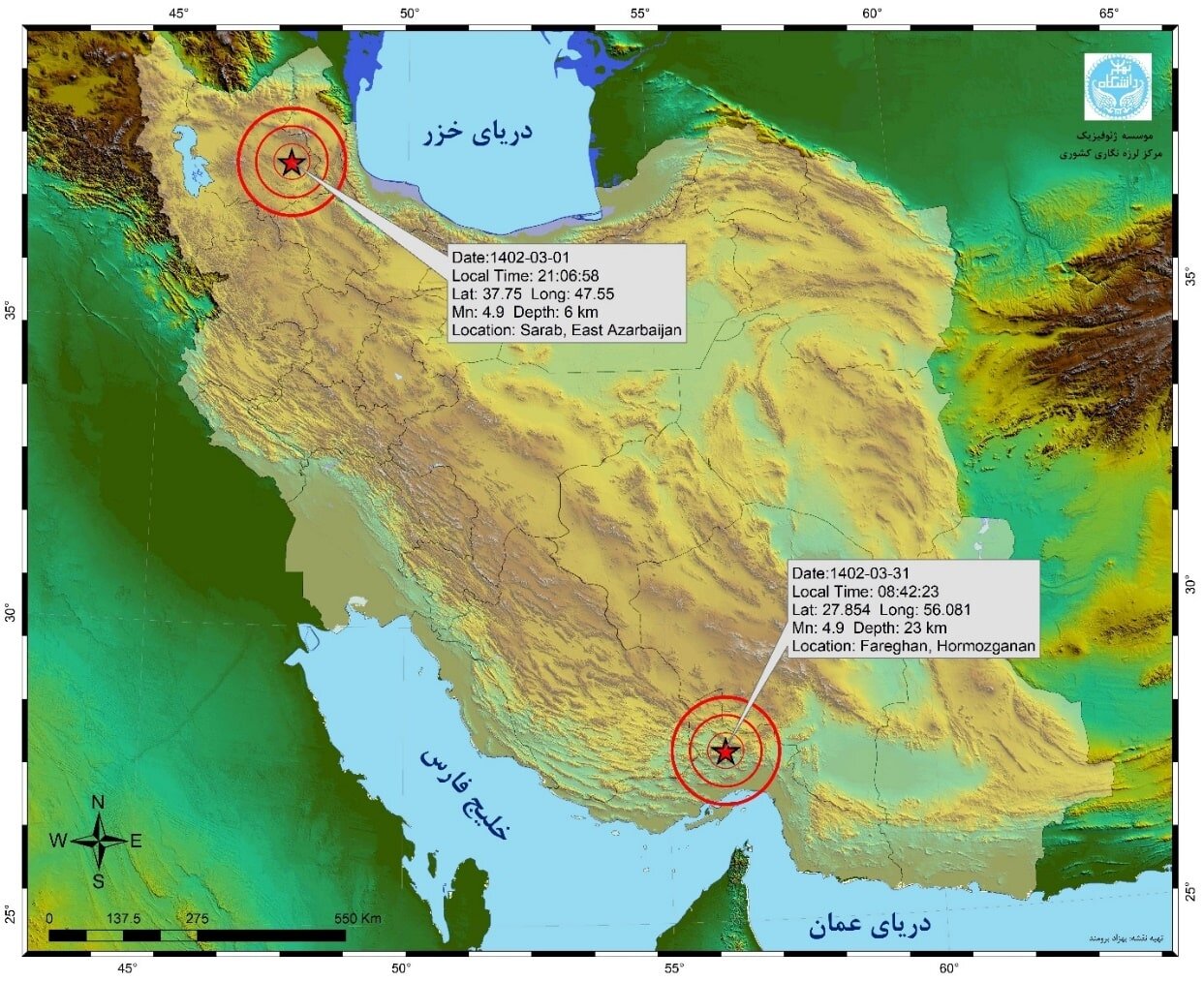601 earthquakes rattle Iran in a month

TEHRAN - A total of 601 earthquakes have been recorded across the country over the past calendar month that ended on June 21, according to the Seismological networks of the Institute of Geophysics of the University of Tehran.
Of the total quakes, 10 had a magnitude of more than 4 on the Richter scale, the largest of which occurred on May 22 and June 21 with a magnitude of 4.9 in the northwestern and southern provinces of East Azarbaijan and Hormozgan, respectively, IRNA reported.
Statistically, 552 earthquakes with magnitudes smaller than 3; 39 earthquakes with magnitudes between 3 and 4, and 10 earthquakes with magnitudes between 4 and 5 have occurred in the country.
Among the provinces of the country, West Azarbaijan with 82 earthquakes, and Khorasan Razavi and South Khorasan with 70 and 47 earthquakes, respectively, recorded the highest number of earthquakes in the country.
Meanwhile, nine earthquakes were also recorded in Tehran province, the largest of which occurred in Arjmand region with a magnitude of 2.3 on the Richter scale.
A total of 7,000 earthquakes have been recorded across the country over the past calendar year, which ended on March 20.
Of the total quakes, 185 were more than 4 on the Richter scale, the largest of which occurred on June 1, 2022, with a magnitude of 6.1 in the southern province of Hormozgan.
Statistically, at least two earthquakes with a magnitude of more than 5 have occurred monthly in the country.
The northwestern province of West Azarbaijan, the northeastern province of Khorasan Razavi, and the southeastern province of Kerman, registered the most earthquakes with 838, 813, and 740 earthquakes respectively.
The northcentral provinces of Qazvin, Zanjan, and Alborz recorded the least earthquakes with 21, 9, and 2 earthquakes respectively.
The southern province of Hormozgan, the southeastern province of Kerman, and the northwestern province of West Azarbaijan registered respectively the highest number of earthquakes with a magnitude of more than 4 on the Richter scale.
The Iranian plateau is located in a very seismically active region of the world and is known not only for its major catastrophic earthquakes but also for the disasters relating to natural hazards, especially earthquakes.
About 2 percent of the earthquakes in the world occur in Iran but more than 6% of the victims of the world earthquakes during the 20th century are reported from Iranian earthquakes. This shows the high level of vulnerability in Iran, according to Mehdi Zare, a professor of engineering seismology.
Iran has entered a decade of earthquakes since the [Iranian calendar] year 1396 (March 2017- March 2018), as the Iranian plateau is shrinking by 30 millimeters per year, Mehdi Zare, professor of engineering seismology at the International Institute of Earthquake Engineering and Seismology (IIEES), has said.
The Strait of Hormuz region in the south of Iran has the highest seismic activity in the region and its formation is related to the continuation of the convergent movement between the Arabian plate and the central continental plate of Iran.
Tehran is also one of the most hazardous metropolises in the world in terms of the risk of different natural disasters, such as earthquakes, floods, subsidence, drought, landslide, fire following an earthquake, etc.
On the other hand, Tehran has an over 8,300,000 nighttime population with a mixture of old non-resistant structures as well as modern high-rise buildings that affect the vulnerability of this city.
MG

Leave a Comment